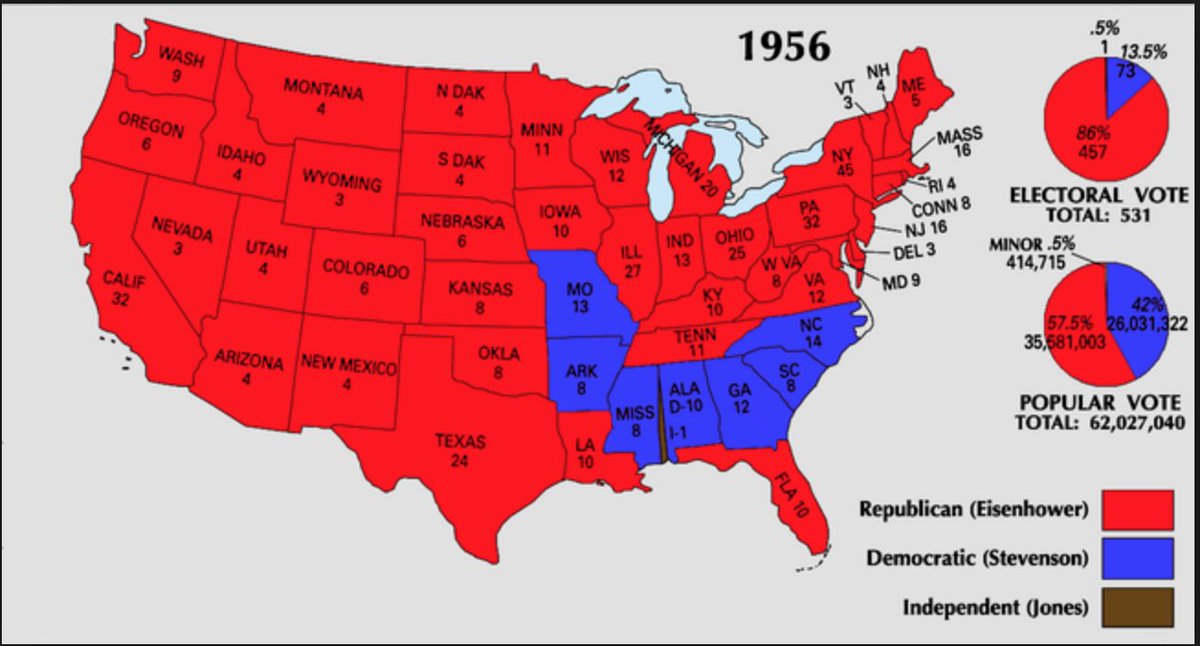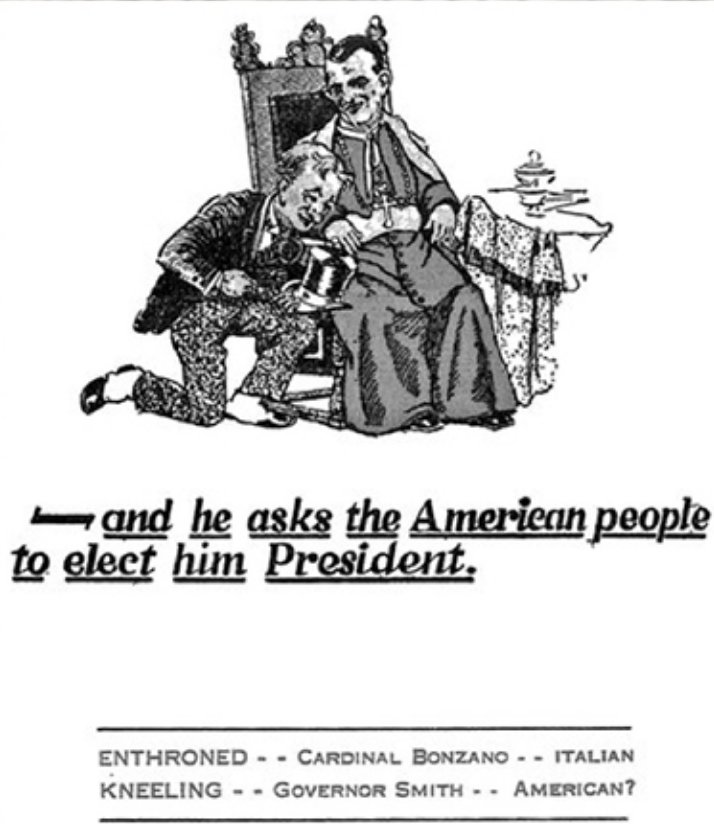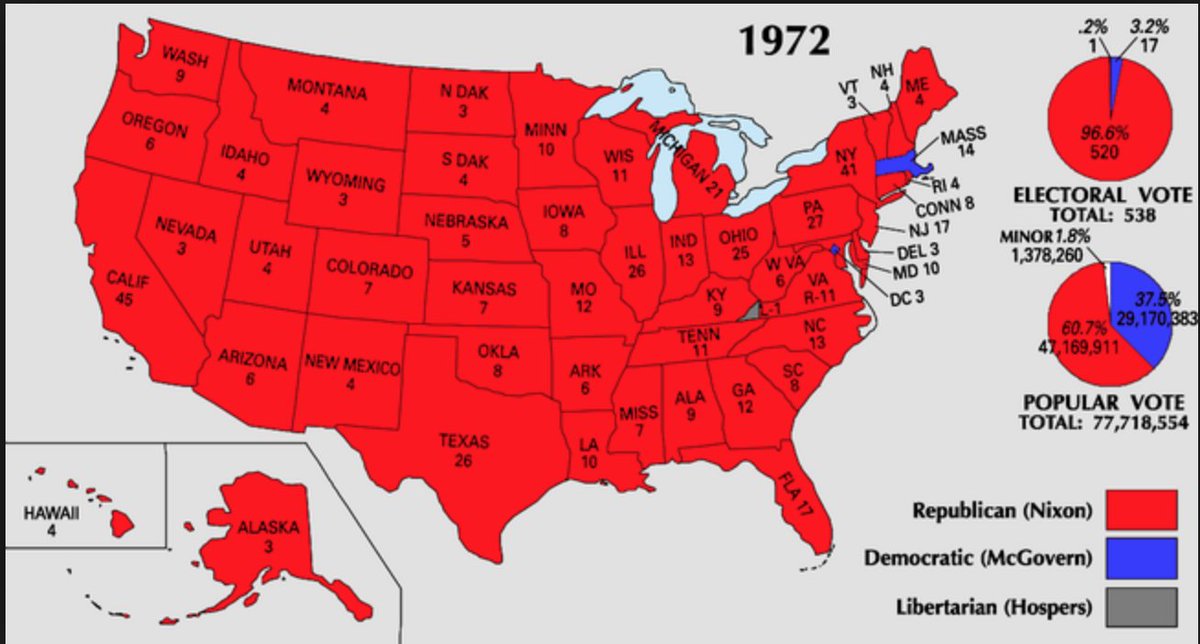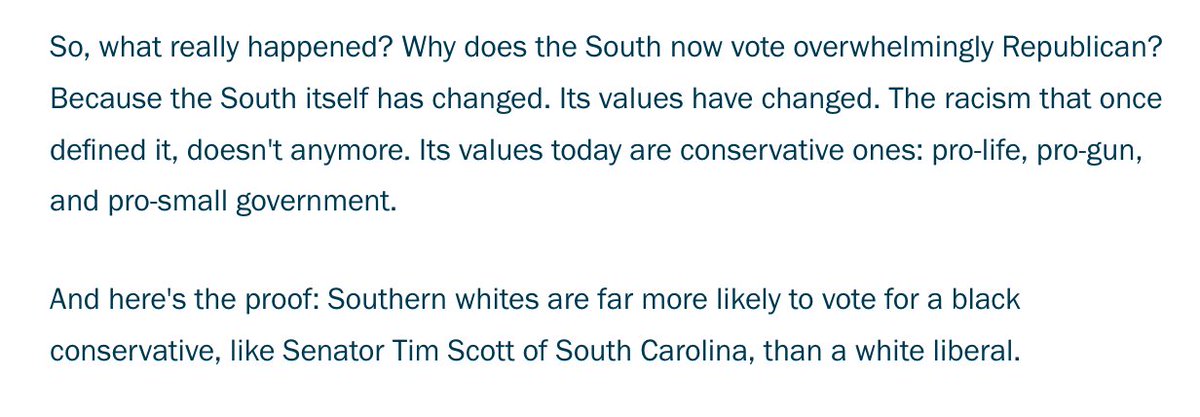prageru.com/videos/why-did…

There was considerable discussion of it throughout the 1960s, especially within the ranks of the Republican Party, as I detailed here:
All of these points are true, and no historian would disagree with any of them.
Well, except for the claim that the Little Rock crisis of 1957 somehow happened *before* the presidential election of 1956. I'm pretty sure we'd all challenge that claim.

In each of those elections, the GOP candidate *did* crack the Solid South. But those were landslide elections where the South and only the South stood by the Dems.



Hoover cracked the South not just because he was nationally popular, but because his opponent -- Al Smith, an Irish Catholic New Yorker who opposed Prohibition -- was reviled in the South and opposed by the Klan.


Throughout the 1930s and 1940s, the GOP made no further inroads in the South -- not in races for president, Senate, House, governor, etc. Nothing.

That was in 1957. 1957 came after 1956.

Again, every historian (even liberal-leaning academic elites!) would agree with this fact.
Though they'd point out that this one unnamed senator was a fairly significant one -- Strom Thurmond, the outspoken segregationist who led the 1948 Dixiecrat revolt.

Because that's not how the party realignment took place. Senators in this era held power through seniority and, despite efforts to replicate Thurmond's deal, it was a one-off.
But notably, they encouraged the younger generation to replace them by running as Republicans.
The career of former Senate Majority Leader Trent Lott (R-MS) is a good example:
I detailed it at length here:
This has been chronicled in extensive detail. amazon.com/Rise-Southern-…
Here are a few examples of that:
The idea that the region's representatives switched parties at the same time is a straw man.
What did change were public perceptions of the parties on matters of civil rights, as @edsall noted here.

This wasn't some conspiracy cooked up by "academic elites" later on.
Again, we've got an odd combination of misstatements and cherry-picked facts.

Segregationist George Wallace, who'd run as an independent (after flirting with a switch to the GOP in 1964), won the Deep South.
And oh, Nixon won it all the next time around.


Southerners won some of the South! Right!
This is only a "gotcha" if you think the realignment story is one where everything changed overnight in 1964. Again, no academic argues that.
Sorry, no -- the two elections of Senator Tim Scott (in 2014 and 2016) doesn't retroactively change how things unfolded fifty years before in the South.
That's not how history works.

I'm sure other #Twitterstorians and political scientists who know the literature will chime in with other points too.
The federal intervention in Little Rock happened in 1957.
And, despite what this video says, the year 1957 came *after* the 1956 presidential election. Honestly.








